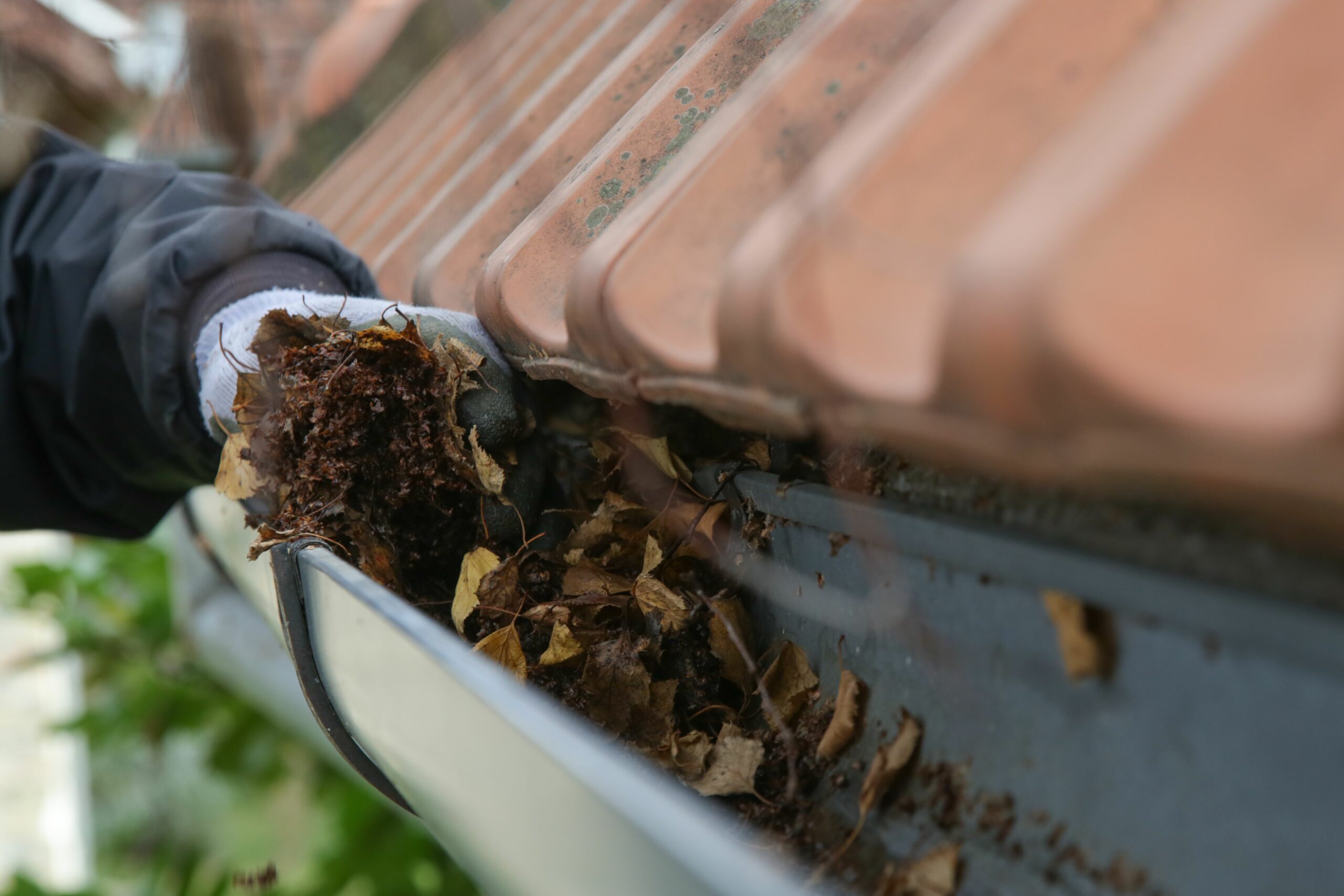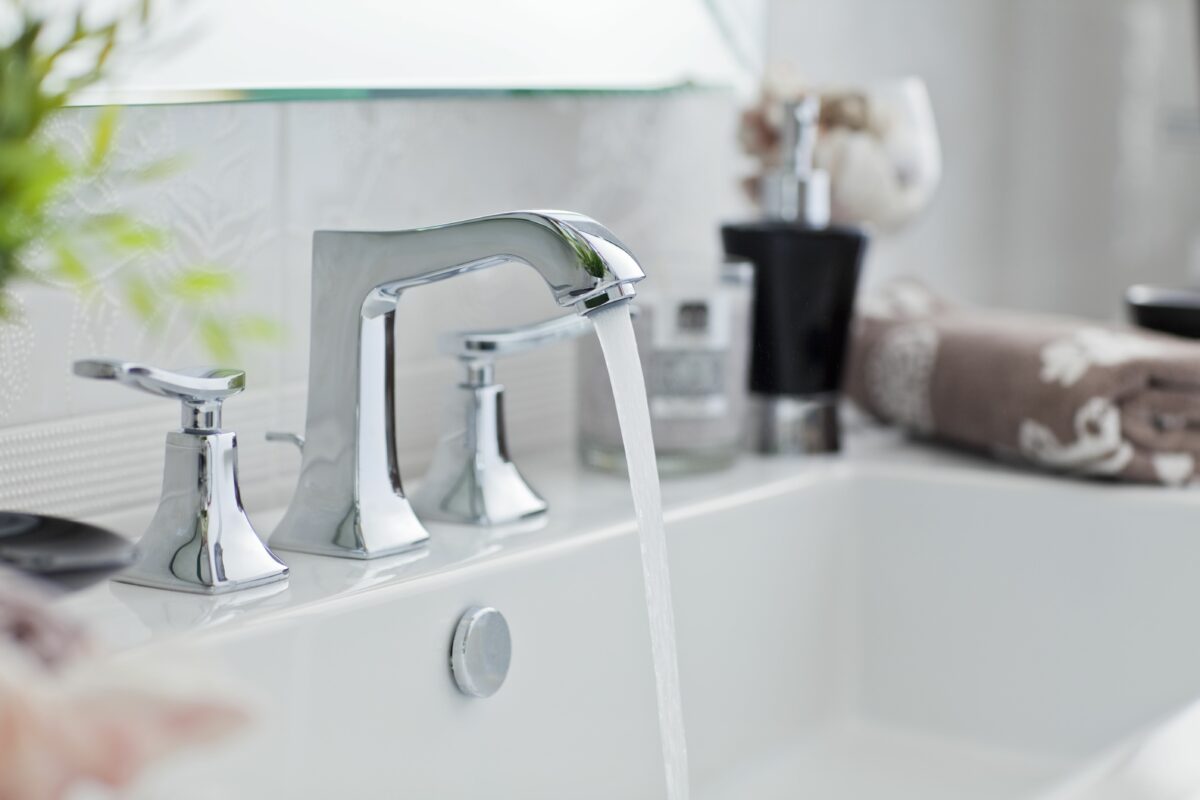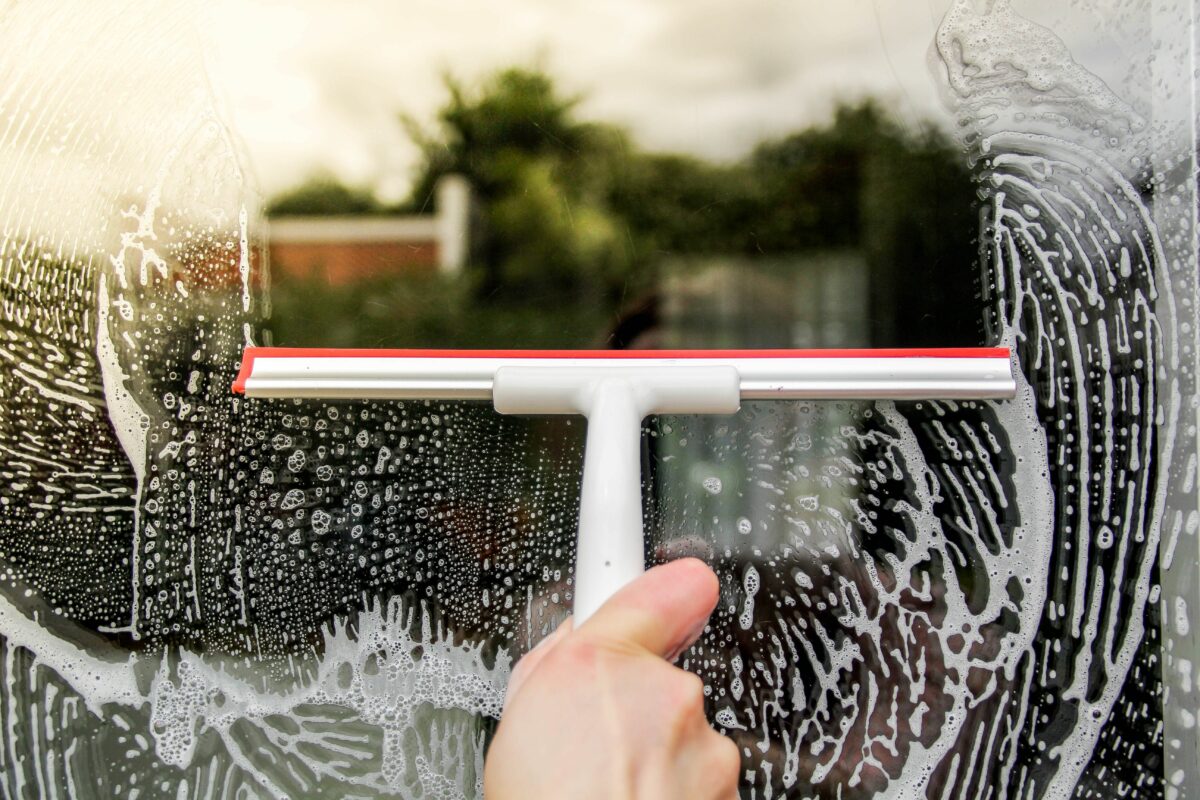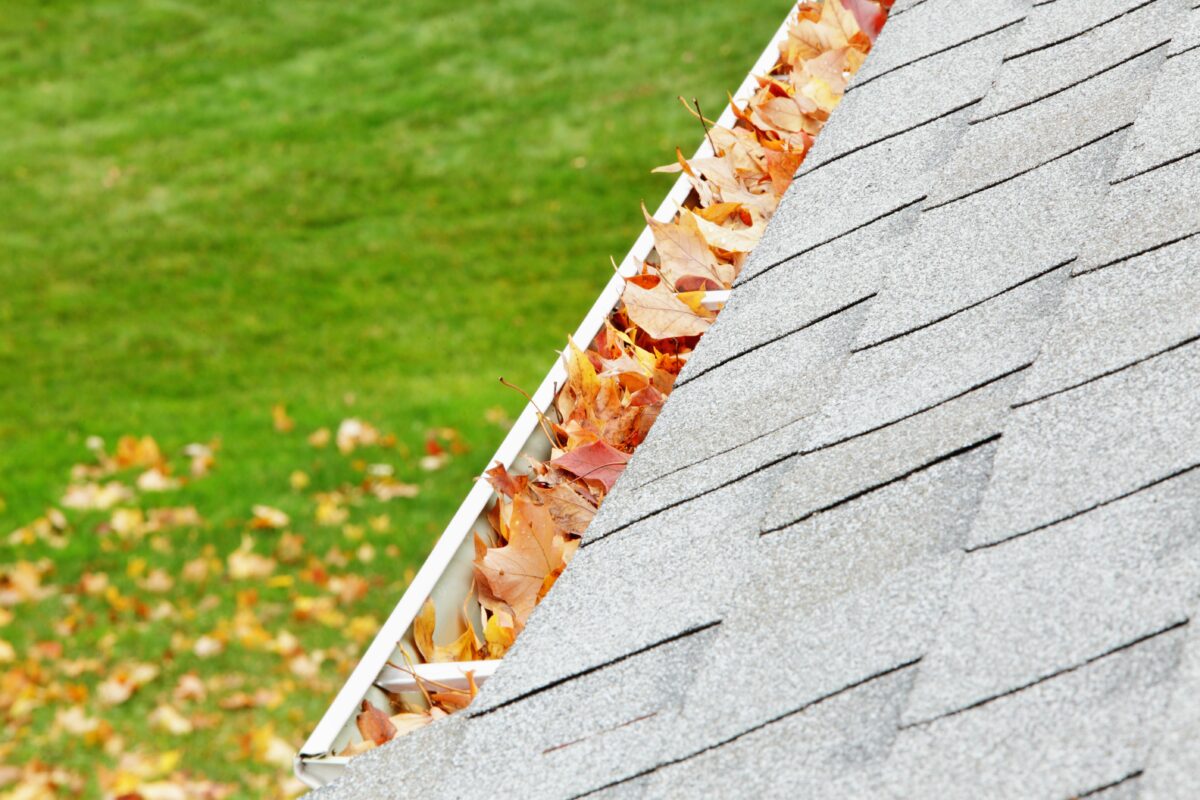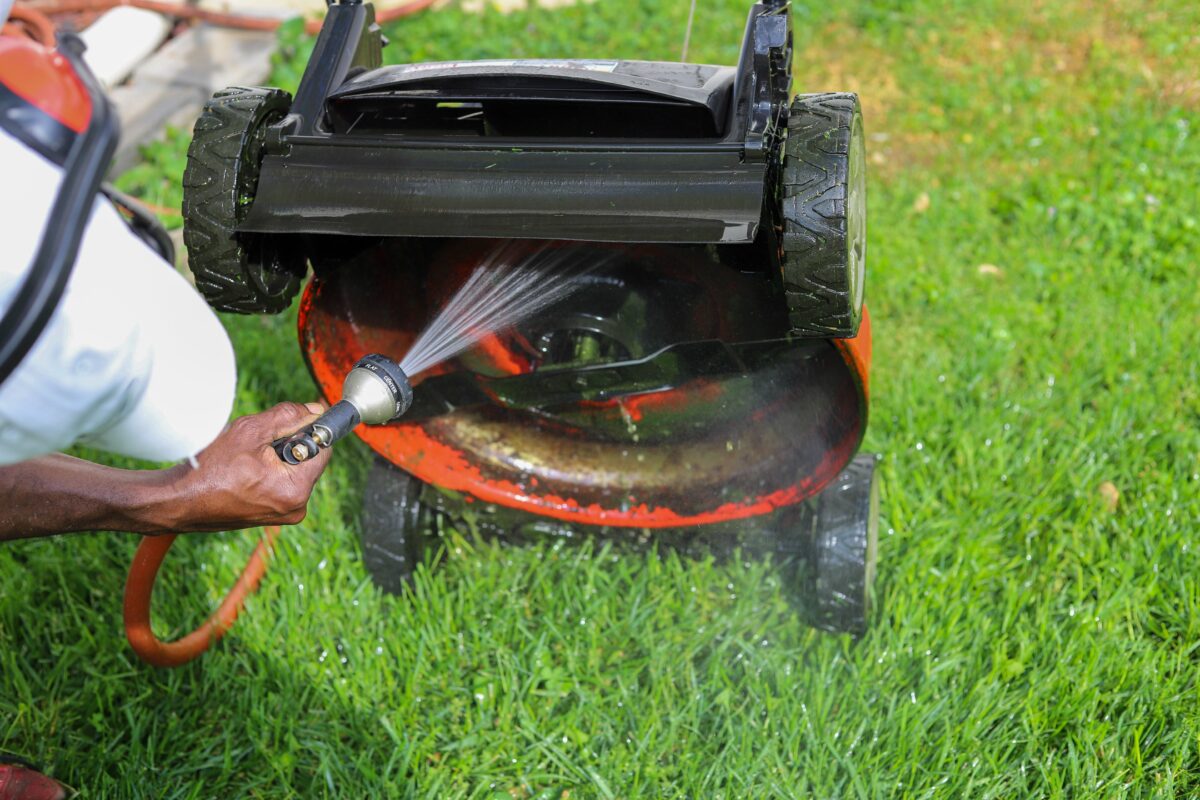Gutters play an important role in protecting a home’s roof, siding, and foundation from leaks, cracks, and water damage. Water flows down from the roof and into the gutter system, where it is redirected to the downspout. The water then exits the downspout in a safe location for drainage, preventing the rain and meltwater from being absorbed into the soil immediately surrounding the home’s foundation.
However, when gutters are full of debris, such as sticks, leaves, or nests, water can become trapped in the gutter. When this occurs, the water level gradually increases in the eaves trough until it overflows, running down the walls, spilling onto the fascia, or possibly even seeping under the roofing shingles, where it may cause leaks, water damage, and rot. Learn how to clean the gutters to keep your home’s system in good working order.
How Gutters Work
A gutter system is relatively simple to understand. The angle of the roof directs the flow of rain and meltwater from ice or snow, allowing the water to run down toward the edges or eaves of the roof. Gutters in the shape of troughs are installed along the eaves, which is why they are sometimes referred to as eaves troughs. The water runs into the gutters, where it collects and is redirected.
The collected water flows through the gutter channels to the first available downspout, where it is carried down and away from the home. Some homeowners have a rain barrel or a connected hose to collect or distribute the excess water into a more appropriate location, while others may simply direct the downspout so that the water drains into a safe location instead of being absorbed into the soil around the foundation.
Why Gutters Require Regular Cleaning
A gutter system must be free and clear of debris to function correctly. Otherwise, dirt, leaves, sticks, and other debris can gather inside the gutters, creating blockages and eventually leading to full clogs. Similarly, gutters can be an attractive location for birds, termites, and other pests to build nests, so cleaning the gutters regularly is essential for protecting the home from these invaders.
The gutters should be cleaned at least twice a year: once in the spring after winter has passed and once in the fall. However, if trees are near the home, you might need to increase the frequency to once every three months to reduce the risk of clogging.
How to Clean Gutters from the Ground
Prepare Cleaning Equipment and Clear the Area
The first step is to clear the area around the home, moving any obstacles or items that could interfere with your work. Next, select and prepare the equipment you will be using. Choose a leaf blower, wet/dry vac, garden hose, or pressure washer. Keep in mind that when working from the ground, these devices need to be connected to an extension wand to access the gutter system.
Remove Gutter Debris
Work from one end of the gutter all the way around the house, but work slowly to prevent pushing debris into the downspouts as you work. Use one or a combination of these items to get the job done.
- Using a leaf blower with an extension, blow any leaves, sticks, and other debris out of the gutters with the wind generated by this appliance. After cleaning the gutter with a leaf blower, rinse it with a garden hose to remove any remaining grime.
- Using a wet/dry vac with an extension, direct the nozzle into the gutter system to collect dirt, grass, stagnant water, sticks, and other debris. Make sure to clean the vacuum after use.
- Using a garden hose with an extension wand and spray nozzle, you can wash any loose debris out of the gutters and rinse away remaining grime, but avoid trying to remove significant clogs with a garden hose, as the water can overflow onto the fascia, siding, and roof.
- Using a pressure washer with an extension wand can be an effective way to remove gutter debris. However, the pressure washer must be on a low setting when directing the flow of water into the gutters to flush out the debris. Otherwise, the pressure or angle of the spray may damage the gutters, roof, or siding of the home.
Clear Downspouts
After removing dirt, sticks, and other debris from the gutters, you must clean out the downspouts using one or more of these devices to ensure proper drainage.
- Extend a drain snake up into the downspout until it comes in contact with a clog or other debris. Break up the clog and pull out any debris to clear the downspout.
- Using a wet/dry vac, you can suck up any loose debris that has accumulated in the downspout. Insert the vacuum hose or extension into the downspout to forcibly break up any clogs that have formed.
- Using a garden hose, you can direct the flow of water into the downspout to dislodge clogs and rinse out loose debris.
- Using a pressure washer at the right angle and level of water pressure is effective for clearing out a downspout. However, be cautious to avoid damaging the downspout or gutter system.
How to Clean Gutters from a Ladder
Prepare Cleaning Equipment and Clear the Area
When setting up a ladder, it’s essential to clear the area around where you will be working. Additionally, you need to set up the ladder on level ground and have a second person to help stabilize the ladder or hand up any needed items while you work. Slips, trips, and falls are some of the most common accidents in DIY jobs and professional settings, so take extra precautions when working on a ladder to avoid injury.
Once the ladder is ready, gather the equipment you will use to clean the gutters. This can include a leaf blower, wet/dry vac, a garden hose, a pressure washer, or a set of work gloves and a gutter scoop. Decide which cleaning method will work best for you, and then prepare the equipment before getting started.
Remove Gutter Debris
Climb the ladder to access the gutters. When one section of the gutter system is clear, climb down the ladder, reposition it, and then climb back up to work on the new section. Repeat this process as you move around the perimeter of the home.
- Using a leaf blower, direct the airflow into the gutters to blow out any sticks, leaves, pine needles, or other collected debris. Use a gutter scoop to remove any significant clogs, and rinse away any leftover grime with a garden hose.
- Using a wet/dry vac, collect leaves, dirt, and other debris that has accumulated in the gutters. Break up clogs with the vacuum or a gutter scoop, and flush out any leftover grime with a garden hose.
- Using a garden hose, direct the flow of water into the gutter system to flush out grass, leaves, and other debris. Switch to a gutter scoop or a similar tool to break up any significant clogs, and then rinse away any leftover grime.
- Using a pressure washer, adjust the power and angle of the spray so that it doesn’t damage the gutter system. Then, direct the water into the gutters to clear away sticks, twigs, and other debris. Work slowly and carefully to avoid damaging the gutters.
- Using gloves or a gutter scoop, you can physically pull out leaves, pest nests, sticks, and other debris. Dump the collected debris into a bucket or a bag for disposal. Use a garden hose to flush out any stuck-on grime.
Clear Downspouts
Working on a ladder makes it easier to access the downspouts from above instead of having to feed extension wands or similar accessories up from below.
- Using a drain snake, insert it into the downspout from above. Ideally, the snake will exit the bottom of the downspout without much resistance, but if there is a clog, rotate the drain snake’s auger head to break up the clog and dislodge any remaining debris.
- Using a wet-dry vac, slide the hose into the downspout to suck up any loose leaves, dirt, and other debris. The hard head of the hose or an attached extension wand can also be used to break up small clogs, though it isn’t the right tool for handling significant clogs in the downspout.
- Using a garden hose will allow you to flush out the downspout from above, forcing any loose leaves, sticks, or other debris out through the bottom of the downspout. However, a garden hose isn’t a good option for breaking up clogs in the downspout.
- Using a pressure washer, you can adjust the angle of the nozzle to spray pressurized water directly into the downspout, making it easier to break up clogs and flush out other debris. However, make sure to work carefully to avoid damaging the gutter system.
Signs the Gutters Need to Be Cleaned
If you aren’t sure whether the gutters need to be cleaned, check for these simple signs that indicate it’s time to clean the gutter system.
- Slow or improperly flowing downspouts are often signs that the gutters or downspouts are clogged and need to be cleaned.
- Overflowing gutters are a clear indication that the gutter system has a blockage that is preventing water from running into the downspout. Grab a ladder and clear out the built-up debris to restore the flow.
- Sagging gutters can be a sign that the gutter is full of heavy debris, like wet leaves or pine needles, but may also result from damage to the fascia, roof, or siding. Have the gutter system cleaned and repaired as soon as possible.
- Visible debris inside the downspout or in the gutter system is another straightforward sign that the gutters need to be cleaned. To stay on top of gutter maintenance, clean the gutter system at least twice a year.


